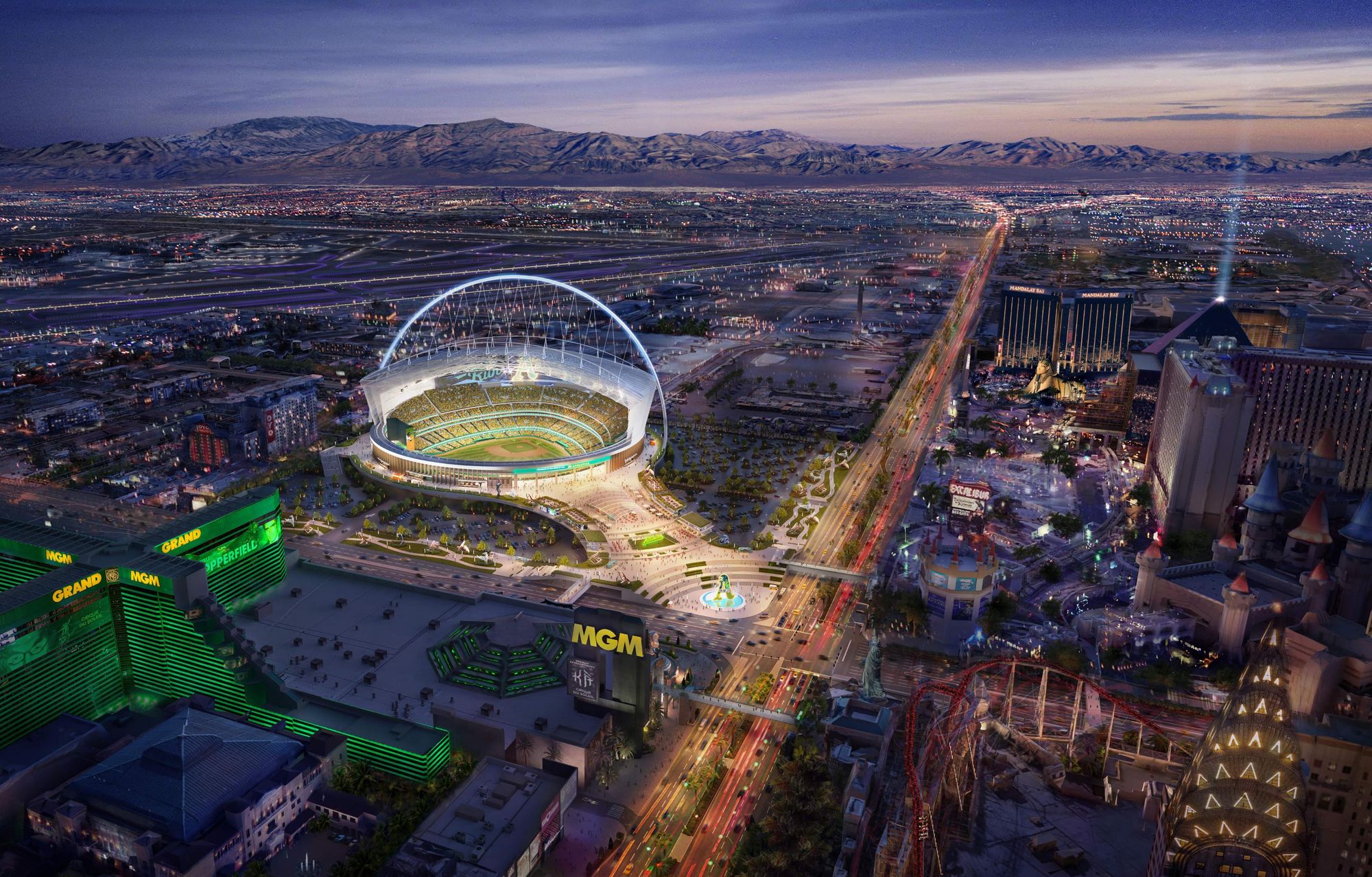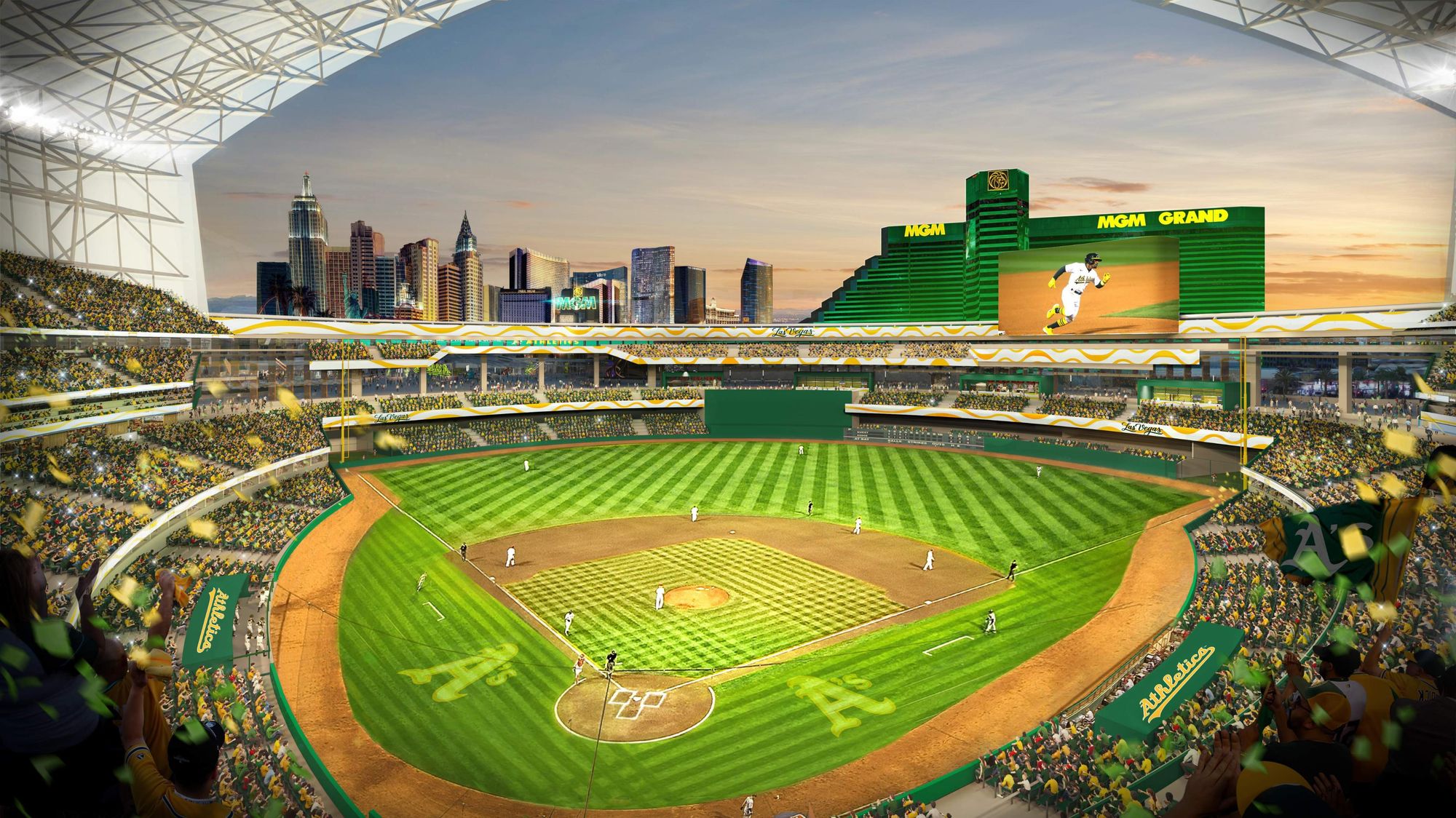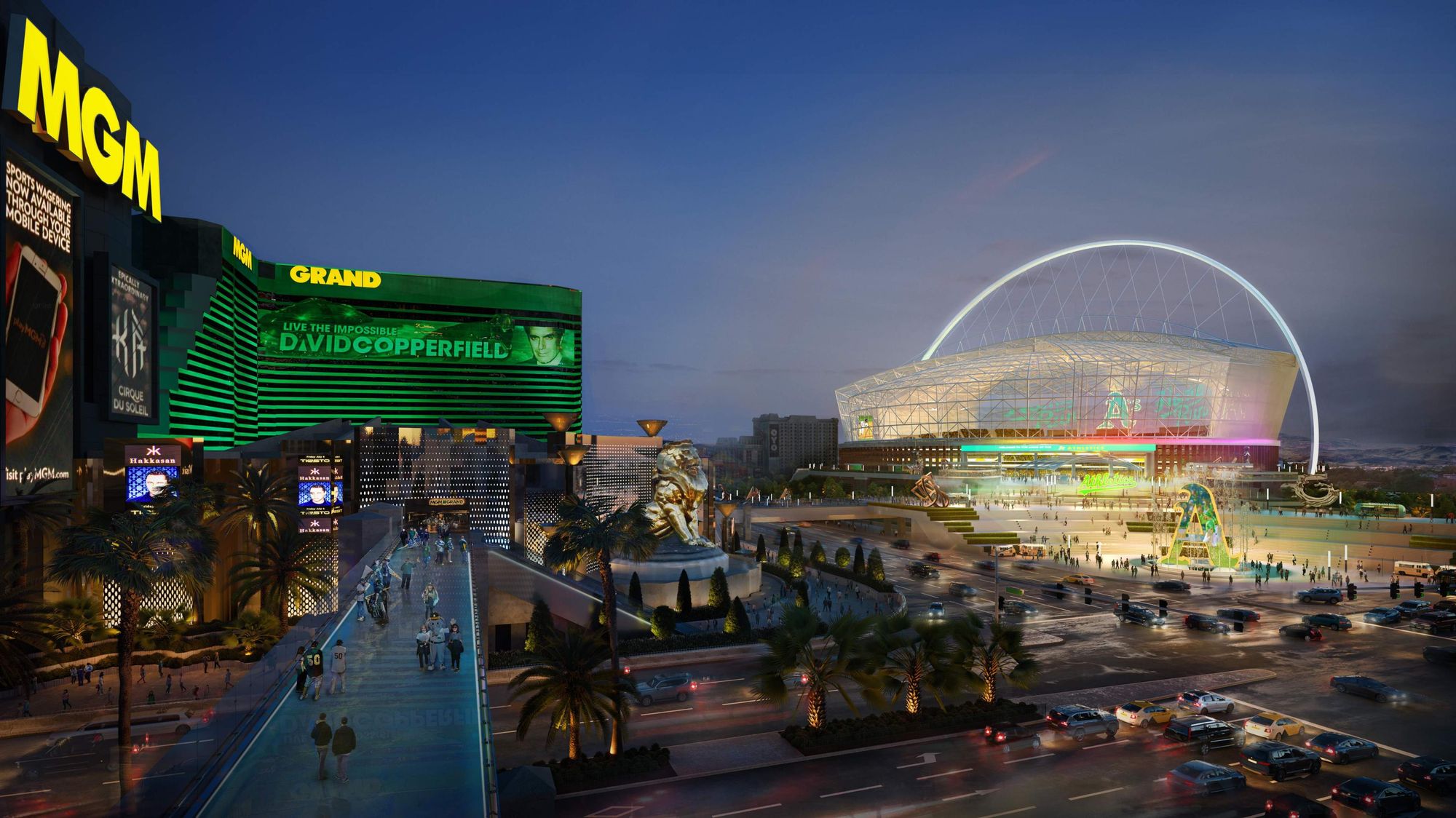Athletics Release First Renderings of Club's Proposed New Ballpark in Las Vegas
The ballpark will feature a partially retractable roof and a fan capacity of 30,000.


Subscribe to our email newsletter and follow us on social media.
Today, the Athletics released its first renderings of the Club’s proposed new ballpark at the 9-acre Tropicana site located on the Las Vegas Strip. The ballpark will feature a partially retractable roof and a fan capacity of 30,000. Construction is estimated at $1.5 billion and will crate more than 14,000 construction jobs.
On May 24th, Governor Joe Lombardo announced a tentative agreement between his office, the A’s organization, Treasurer Zach Conine, and Clark County officials to forward a bill for consideration by the Nevada Legislature that would bring the A’s to Las Vegas. As a part of the proposed legislation, the public-private partnership includes public financing constituting no more than $380 million, which is less than 25 percent of the total $1.5 billion construction cost.

“This agreement follows months of negotiations between the state, the county, and the A’s, and I believe it gives us a tremendous opportunity to continue building on the professional sports infrastructure of southern Nevada,” said Governor Joe Lombardo. “Las Vegas is clearly a sports town, and Major League Baseball should be a part of it.”
The tentative agreement is being drafted into legislation that will be introduced in the Nevada Legislature in the coming days to be publicly debated and considered.
“From the minute we stepped onto the Tropicana site nearly two years ago, it was immediately obvious what a fantastic fit it would be for a new A’s ballpark in Las Vegas,” said A’s director of design and owner of Schrock KC Architecture, Brad Schrock.
A's President Dave Kaval said, “We are excited to share our vision for the A’s potential new home. As our first conceptual design, we will continue to refine the look and feel of the ballpark over the next year. We hope our project goes beyond a traditional ballpark and serves as a catalyst for community development and engagement. It follows in the footsteps and success of the professional sports teams that come before us, in creating union jobs, stimulating economic growth, and fostering investments in the community."











